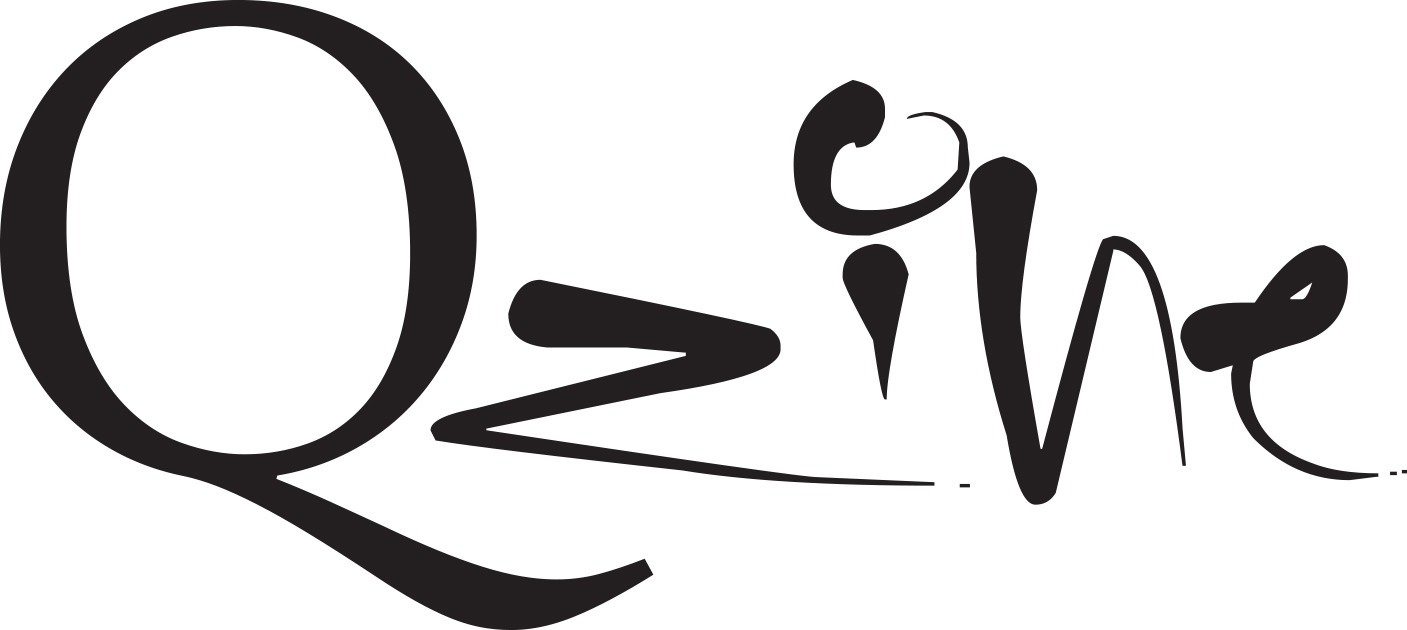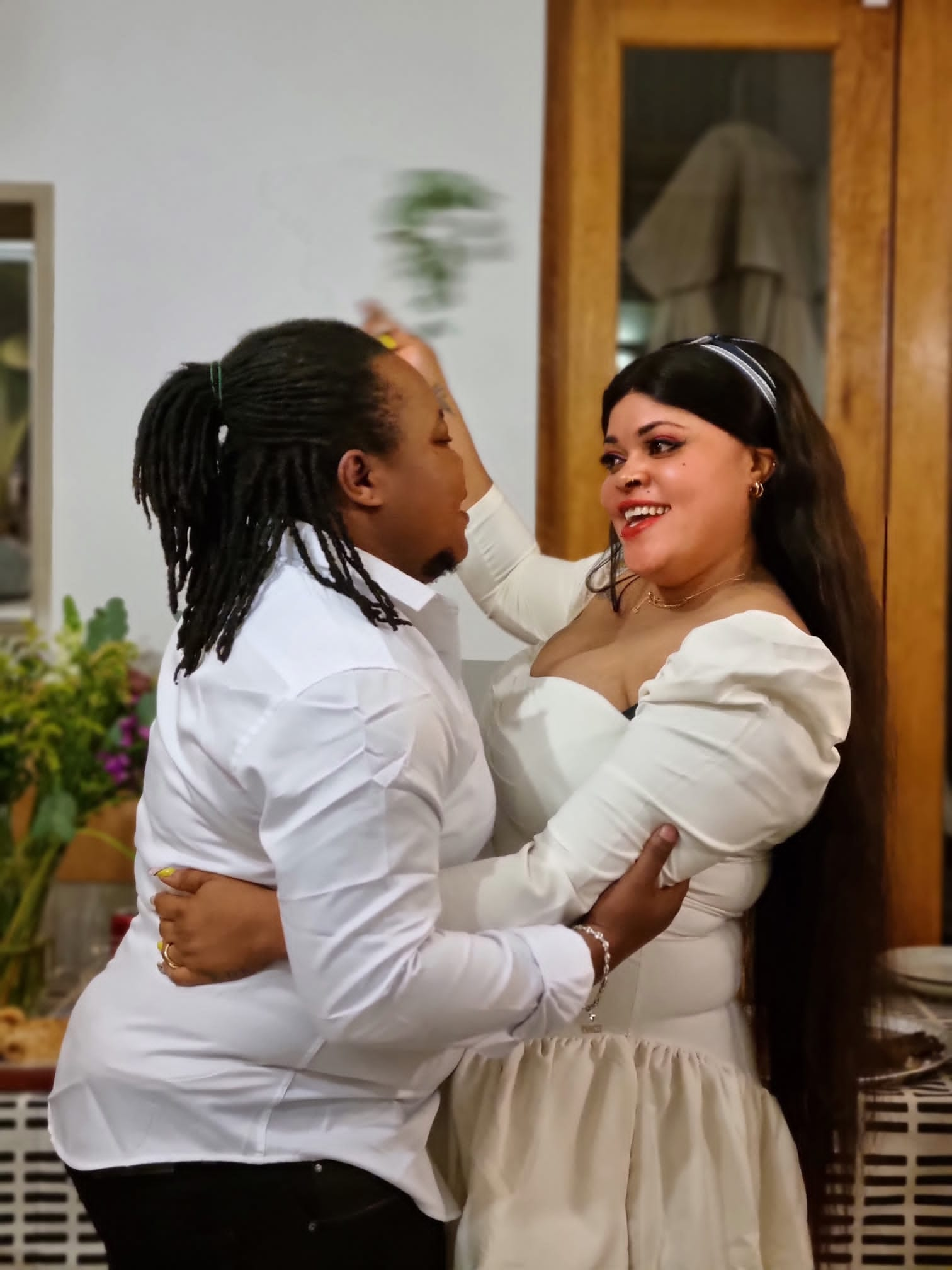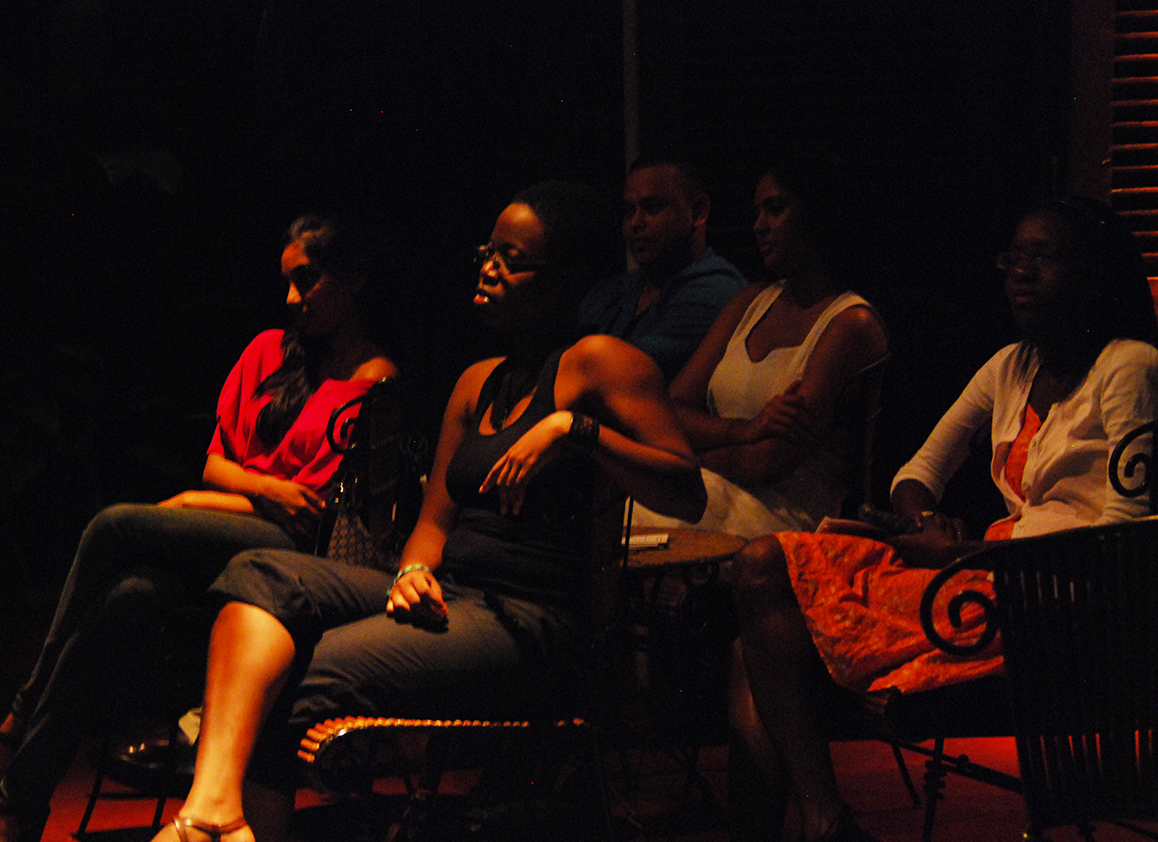Underground Casablanca
By Joseph
Despite unexpected last-minute venue changes, Moroccan young ‘artivists’ celebrated the third anniversary of the Arab Spring uprisings in a victorious, special edition of the ‘Festival de Resistances et Alternatives’ (FRA) last February in Casablanca.
IT HAD BEEN ONE YEAR AFTER THE OUTBREAK OF SOCIAL UPRISING IN MOST MAJOR CITIES OF MOROCCO, IN 2011. A BUNCH OF YOUNG ACTIVISTS IN THEIR EARLY TWENTIES WERE ARRANGING CHAIRS ON A CHESS-TILED FLOOR FOR THE FIRST EVENT OF THE FESTIVAL. A FRIEND WAS SETTING UP A PHOTO EXHIBITION ON PREVIOUS YEAR’S PROTESTS – THEY HAD TO TRY DOZENS OF PRINTING HOUSES UNTIL THEY FOUND ONE WHO AGREED TO PRINT THE PICTURES.
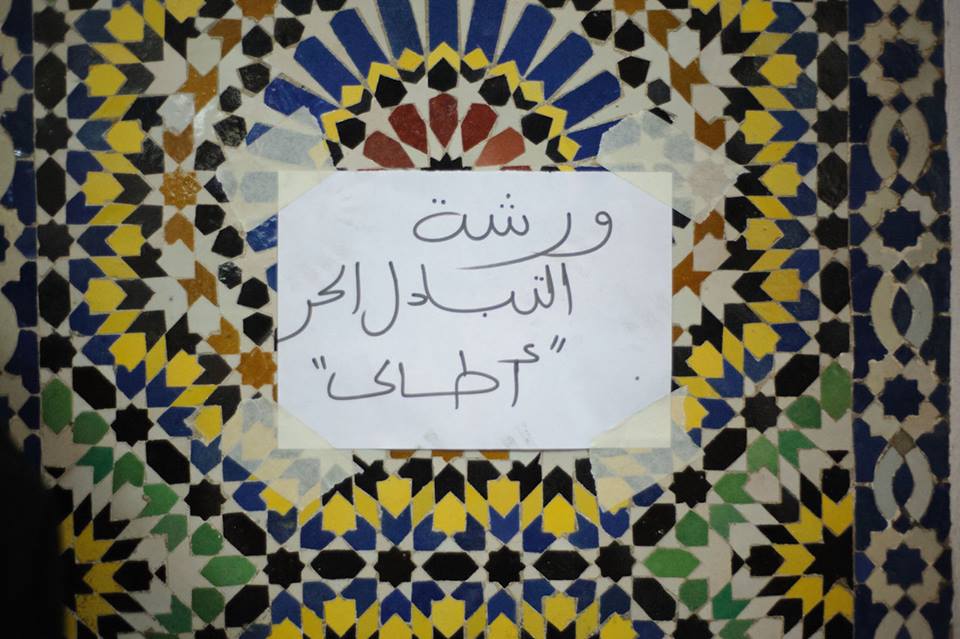
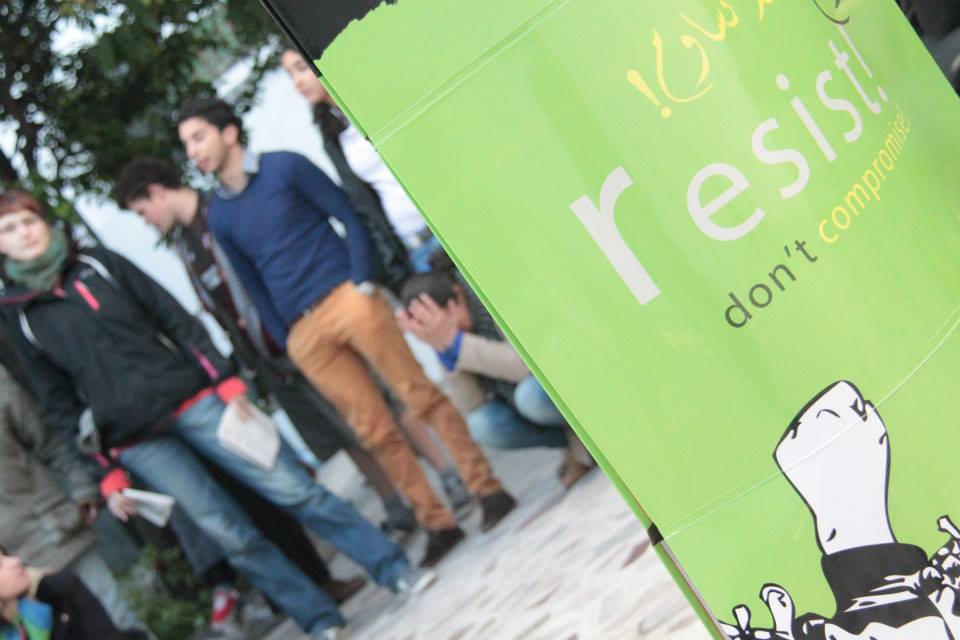
THAT NIGHT I GOT HOME FEELING MOVED. WE DANCED AS IF IT WAS OUR FIRST CHANCE TO DANCE FREELY, SHAKING OUR HEADS TO SOUAD MASSI’S BEST HITS AS ZAGHROUTA ULULATIONS AND AN INTREPID CLAPPING SOUNDED ALL AROUND.’
In Morocco, arts entertainment relies heavily on state-sponsored mainstream culture. As such, young ‘artivists’ and the overall youth population are eager to create spaces where they can share their ideas, exhibit their pieces of arts and relate to other people with common interests and mindsets. Between February 20 to 23 2014, the third edition of the festival of alternative arts and culture was held in Morrocco. Originally planned to be held in one of Casablanca’s most emblematic sites, an ancient building complex formerly used as a slaughtering house that arts and cultural associations have been trying to turn into a hub for independent artists, a crossroads of resistance movements and a venue for alternative events.
Following two successful previous festivals, this event welcomed a number of visitors and participants and offered varying cultural activities such as film screenings, theatre workshops, political debates and concerts. The organizers of the FRA wanted to build a citadel over the span of the festival – an installation modeled on the idea of the ‘traditional city’ and comprising all elements that make up the everyday lives of their citizens. In the hope of bringing the abandoned building back to life, the citadel was designed with a school, a hospital, a parliament, a spiritual space, a police station and a street market. All of these elements would create the opportunity for participants to collaborate in the building of a democratic, ideal society and look critically and creatively at the current social challenges and institutional practices.
However, this idea quickly faded when, one week prior to the festival, the organizers received a letter from the authorities forbidding the event unless official authorization was granted.
‘One day before the festival would start, after one week we spent fighting, we knew that we would not have permission, so we moved on to our plan B, which was to develop the program in different places with the help of several organizations. In the end, we managed to carry on with our program despite threats from the Ministry of the Interior,’ explained a 22-year-old member of the organizing committee of the festival who is also a stage designer.
The idea of organizing an ‘alternative festival’ came from social activists’ desire to celebrate the February 2011 uprisings when thousands of Moroccans rallied in the streets to demand social change. This was how the ‘February 20 movement’ was born.
Two years after this movement was born, young activists have teamed up and formed cultural and artistic groups with the shared objective of promoting freedom of expression and fundamental human rights. The feminist collective Woman Choufouch, the Moroccan Union of Students for a Change in the Education System, the independent filmmaking group Guerrilla Cinema, Vegetarian Moroccans, as well as other independent artivists took part in this 4-day cultural arts festival that sought to be as ambitious and diverse as possible in its offerings.
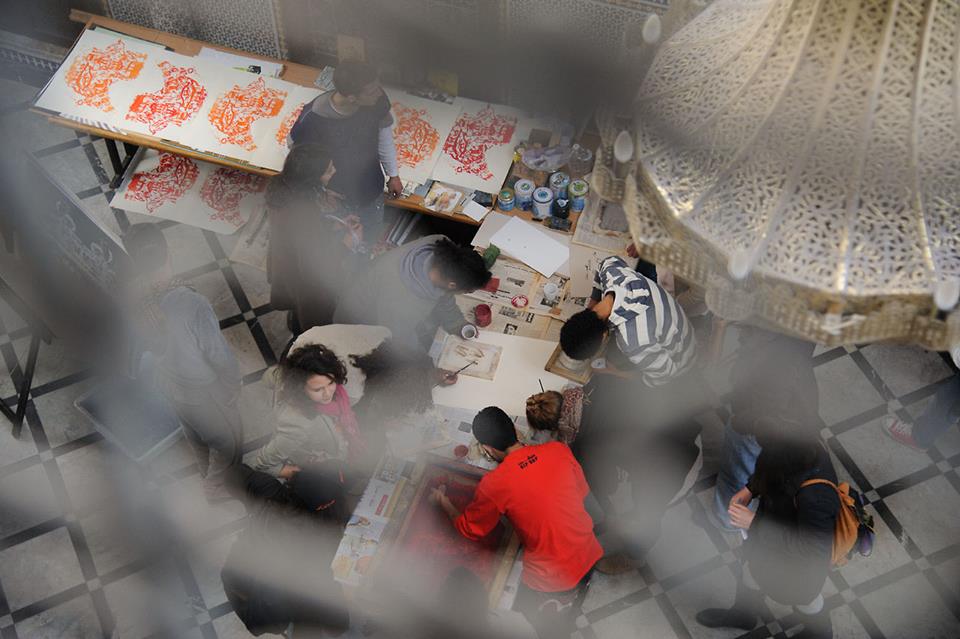
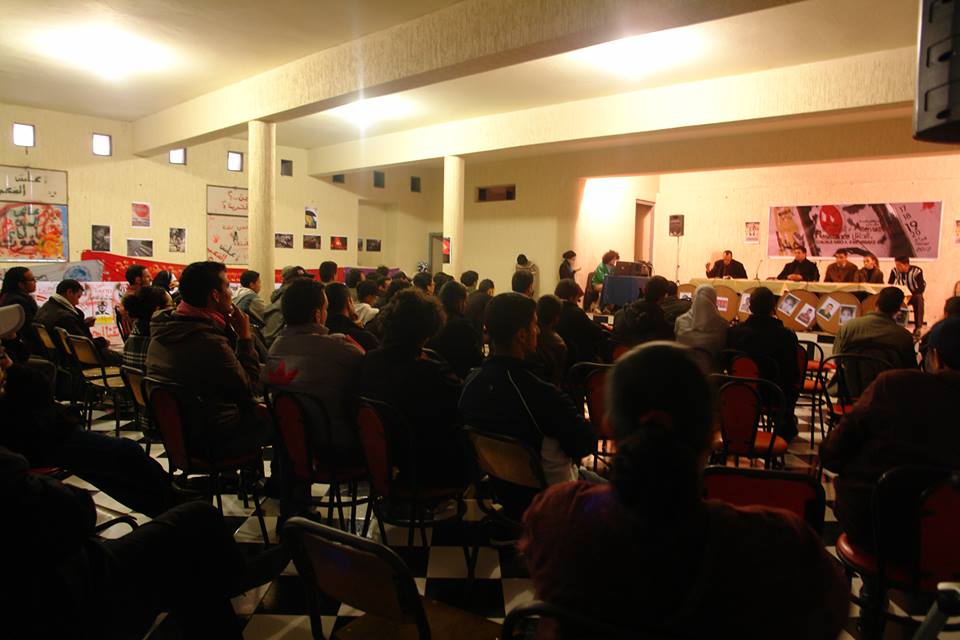
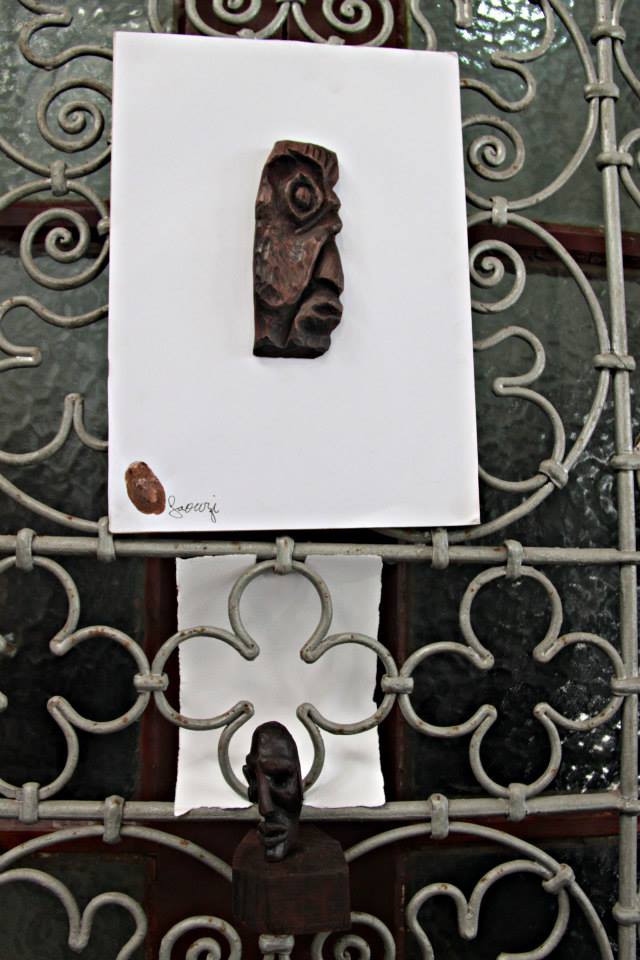
Despite a last-minute venue change and several budget-related challenges, ‘all the activities happened as planned without any censorship.’
‘The FRA’s audience is made up of mostly young people. I think the number of visitors is becoming bigger and bigger after each festival. More than 200 people attended the festival this year, which was a new experience for us.’
The festival’s program featured workshops on theatre of the oppressed, independent radio broadcasting, debates on other revolutionary movements abroad and religious identity, democracy games, concerts, alternative lessons on history, economy and communication, screening of feature films such as ‘The Land Between’ by Australian David Fedele, a documentary which looks into the hidden lives of sub-Saharan migrants in the mountains of northern Morocco. A selection of short movies were screened for the duration of the festival .
This year was by far the most diverse festival with independent contributors from Germany, Palestine, Spain, France and Australia who crossed borders to share their artistry and experience. A special discussion was led by LGBT members that dealt with sexual and reproductive health as well as gender issues in general.
‘We had results in terms of the program being rich and varied. Also the participation of people increased, which was a proof that people need a place to meet, share and express themselves’.
‘All of the activities were successful, but what really impressed me was that after the two previous festivals we finally managed to organize a real concert, I mean, with a proper stage and real lighting!’
Aside from this passionate, young stage designer, many others – film editors, graphic designers, cultural managers or musicians – did their bit to make this event a success, which proves that there is ‘a new Morocco’ marching to the beat of its own drums!
